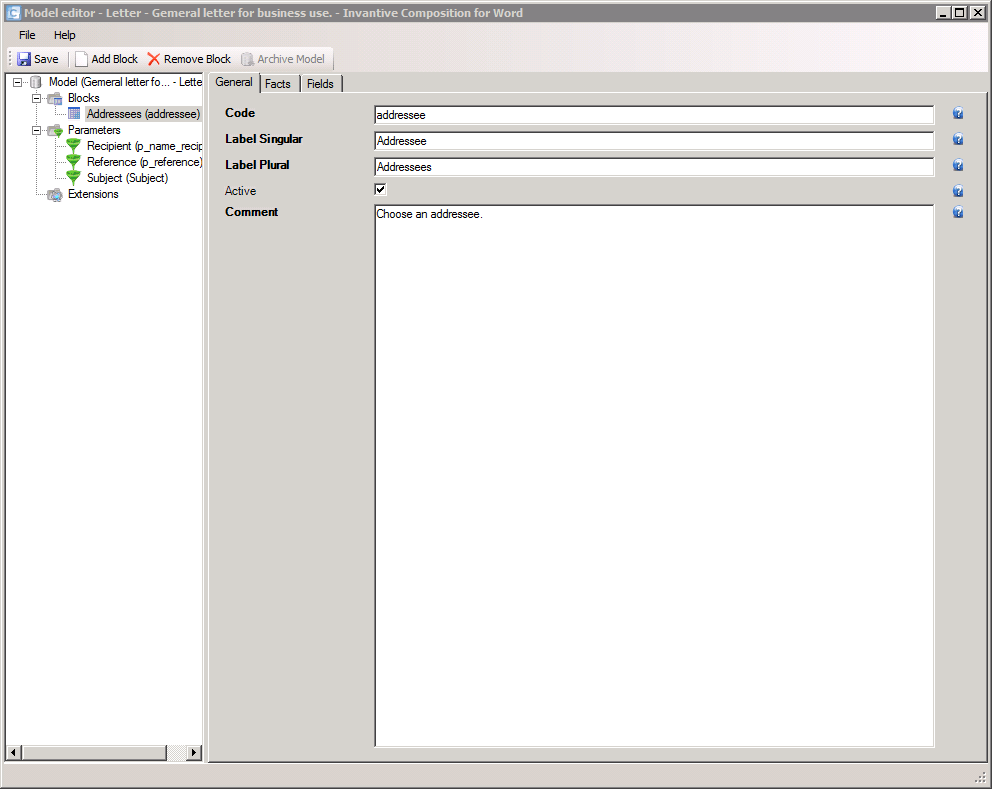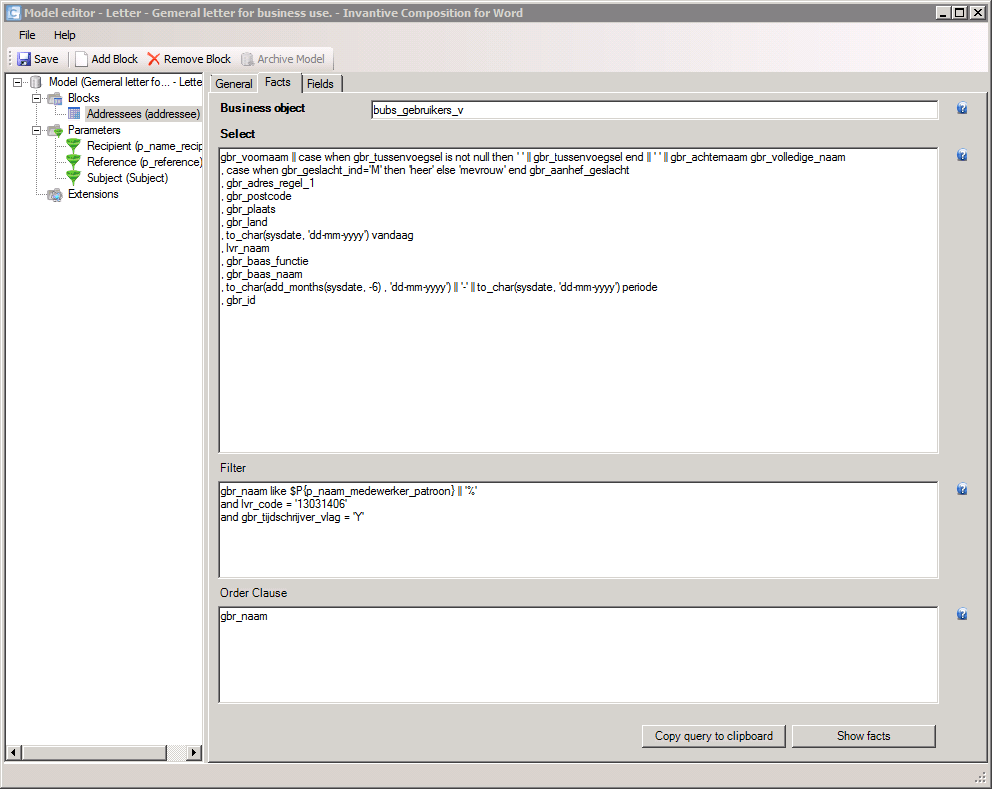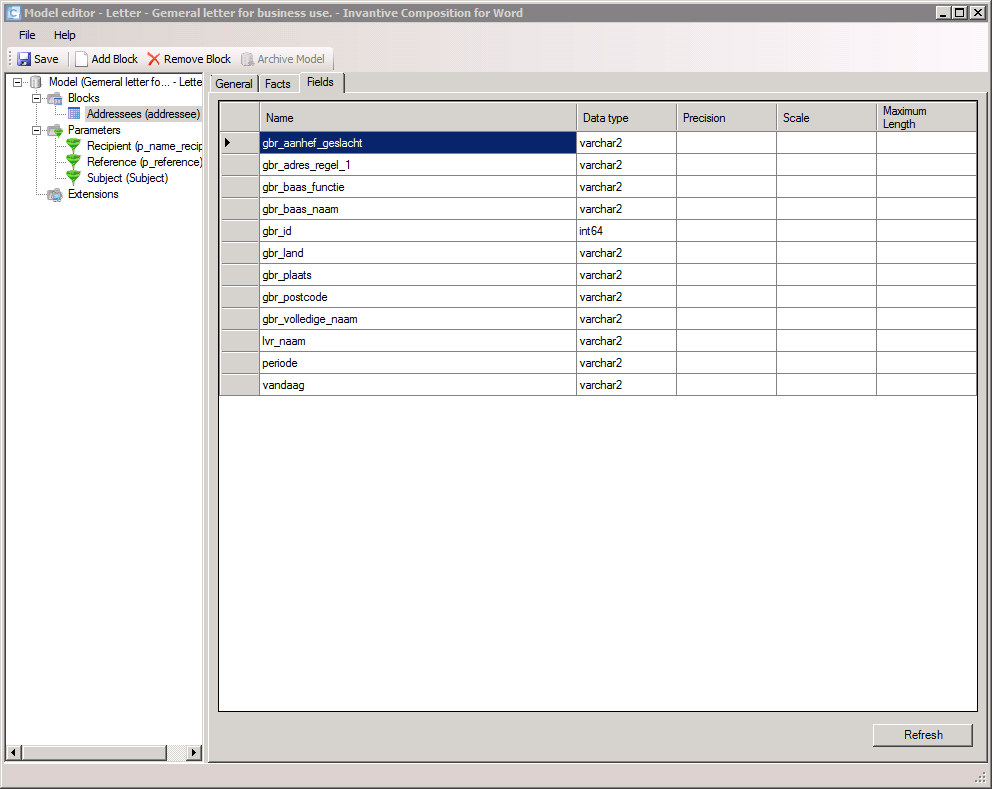Block |
A block describes a sequence of data. Blocks do not have relations with each other. You can however relate the data with each other by using fields from another block in the filter and by ensuring that the associated <invantive:foreach> are in the correct order within each other.
General
In the general tab you indicate how the block is called and which labels could be used to make the data recognisable for end users.

The meaning of the entry fields is:
Code |
The code that is used to identify the block, for example in a <invantive:foreach>. |
Label singular |
In normal language the name of the data in singular. |
Label plural |
In normal language the name of the data in plural. |
Active |
Indicator whether this block can be used actively. |
Comments |
Explanation of the block. |
Facts
The facts determine the sequence of data that the block uses.

The meaning of the entry fields is:
Business Object |
The name of the business object, as registered in the knowledgebase. This is often the name a database view. |
Select |
The fields of the company object. The fields need to be separated with a comma. |
Filter |
Definieer een filter om een gedeelte van een blok te selecteren in SQL-syntax. |
Volgorde |
The list of fields to determine the data sequence in SQL syntax. |
Fields
This window shows the columns of the business object and is automatically filled.

The meaning of the fields are is:
Name |
The name of the field. |
Data Type |
The data type of the field. |
Data Precision |
The maximum number of digits in the number. Only for numeric fields. |
Scale |
The number of digits before the decimal separator. Only for numeric fields. |
Maximum length |
The maximum number of characters in the text. Only for text fields. |
 Invantive Composition for Word
Invantive Composition for Word